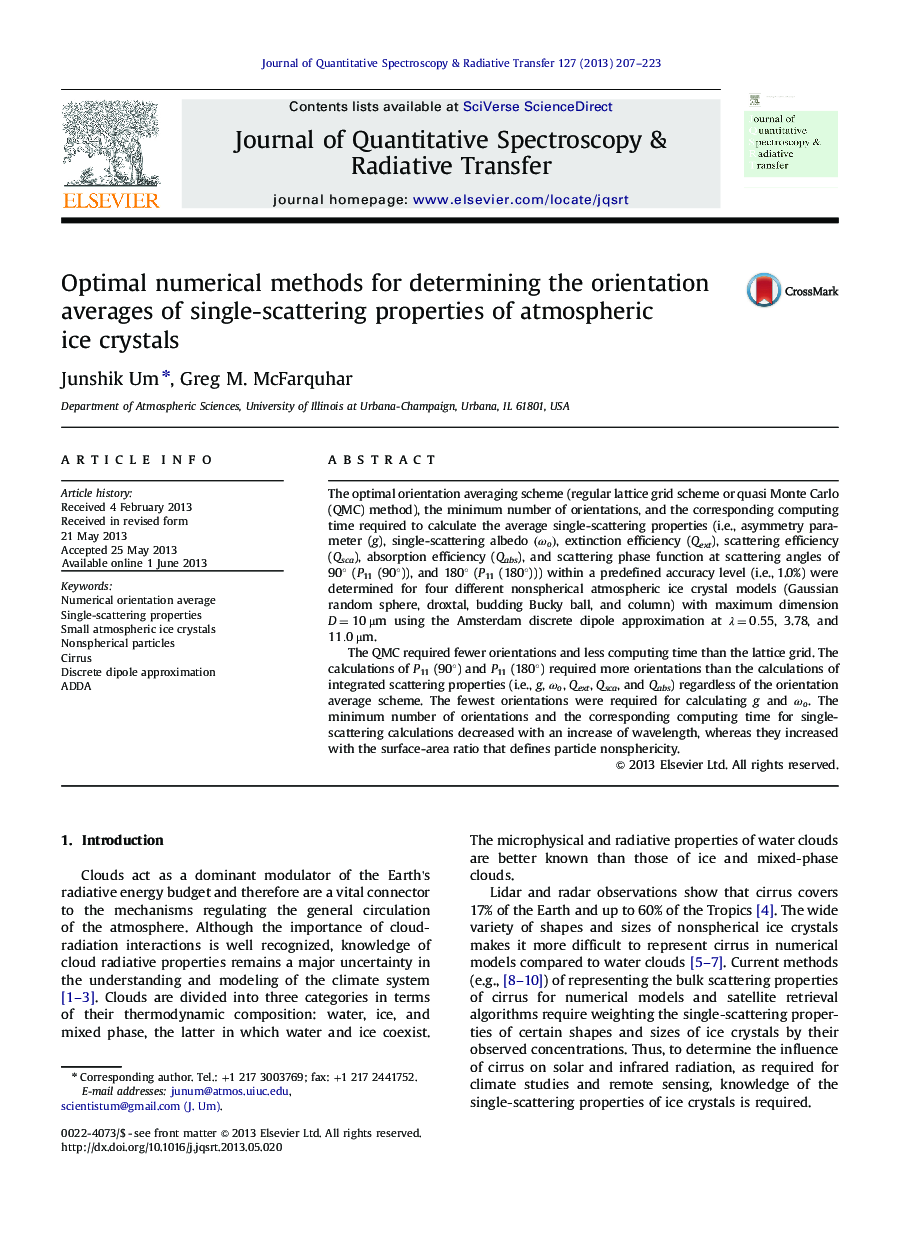| Article ID | Journal | Published Year | Pages | File Type |
|---|---|---|---|---|
| 5428779 | Journal of Quantitative Spectroscopy and Radiative Transfer | 2013 | 17 Pages |
The optimal orientation averaging scheme (regular lattice grid scheme or quasi Monte Carlo (QMC) method), the minimum number of orientations, and the corresponding computing time required to calculate the average single-scattering properties (i.e., asymmetry parameter (g), single-scattering albedo (Ïo), extinction efficiency (Qext), scattering efficiency (Qsca), absorption efficiency (Qabs), and scattering phase function at scattering angles of 90° (P11 (90°)), and 180° (P11 (180°))) within a predefined accuracy level (i.e., 1.0%) were determined for four different nonspherical atmospheric ice crystal models (Gaussian random sphere, droxtal, budding Bucky ball, and column) with maximum dimension D=10μm using the Amsterdam discrete dipole approximation at λ=0.55, 3.78, and 11.0μm.The QMC required fewer orientations and less computing time than the lattice grid. The calculations of P11 (90°) and P11 (180°) required more orientations than the calculations of integrated scattering properties (i.e., g, Ïo, Qext, Qsca, and Qabs) regardless of the orientation average scheme. The fewest orientations were required for calculating g and Ïo. The minimum number of orientations and the corresponding computing time for single-scattering calculations decreased with an increase of wavelength, whereas they increased with the surface-area ratio that defines particle nonsphericity.
â¢The number of orientations required to calculate the average single-scattering properties of nonspherical ice crystals is investigated.â¢Single-scattering properties of ice crystals are calculated using ADDA.â¢Quasi Monte Carlo method is more efficient than lattice grid method for scattering calculations.â¢Single-scattering properties of ice crystals depend on a newly defined parameter called surface area ratio.
